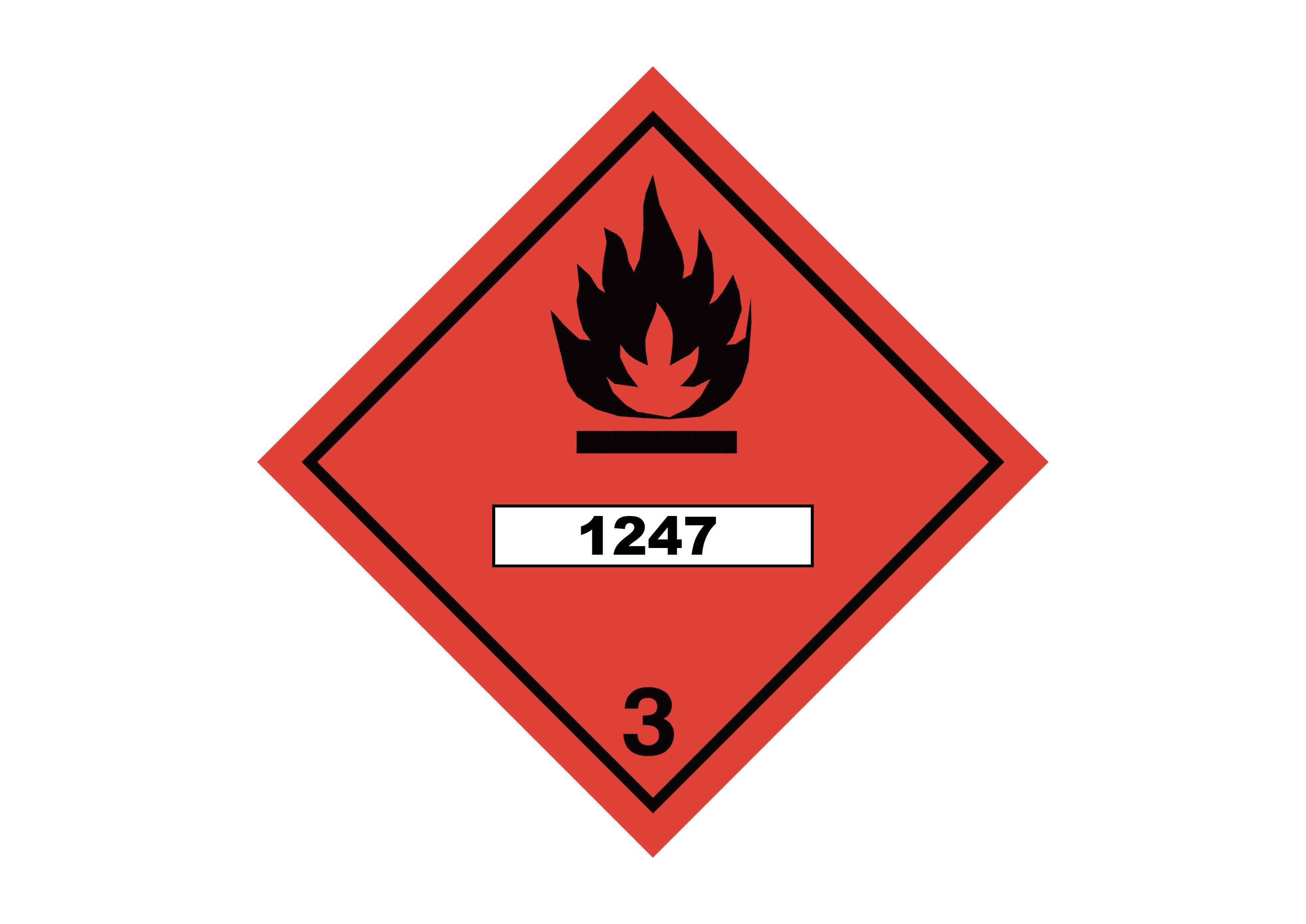What is Methyl Methacrylate ( MMA )? Hazard Classification, Uses, Risks, and Storage Guidelines
Methyl methacrylate is widely used across various industries, including materials, construction, and healthcare, and serves as a vital raw material in chemical manufacturing. However, MMA is a flammable substance that poses safety risks if not handled or transported correctly. This article covers its primary applications, hazards, and best practices for safe storage and transport.
1. What Is Methyl Methacrylate (MMA)? Hazard Classification & Main Applications
Methyl Methacrylate (MMA)
- HS Code : 2916 1410 001
- Chemical Formula : C₅H₈O₂
- UN No. : 1247
- Hazard Classification : UN Class 3 (Flammable Liquid)
- Appearance : Colorless, transparent liquid with a strong, irritating odor

Physical Properties
- Density: 0.944 g/cm³ (20°C)
- Melting Point: -48°C
- Boiling Point: 100–101°C
- Refractive Index: 1.412 (20°C)
- Viscosity: 0.56 mPa·s (25°C)
- Vapor Pressure: 3.73 kPa (20°C), 12.7 kPa (40°C)
- Flash Point: 10°C (open cup)
- Auto-ignition Temperature: 421°C
- Water Solubility: Slightly soluble (1.6 g/L at 20°C), soluble in water, alcohols, ketones, esters, and other polar organic solvents
- Surface Tension: 28.9 mN/m (25°C)
Chemical Properties
MMA contains an unsaturated double bond and readily undergoes free radical polymerization. It is typically synthesized via esterification of methacrylic acid (MAA) with methanol. MMA is a monomer for many polymers and has extensive applications in the chemical, textile, plastics, medical, aerospace, and transportation industries. For instance, it can be made into tissue preservative, emulsion paint, LCD screens, acrylic, and resin.
Further Reading : What is Methacrylic Acid(MAA)? Hazard Classification, Uses, Risks, and Storage Guidelines
Key Applications
(1) Acrylic Materials
MMA can be polymerized into polymethyl methacrylate (PMMA), also known as acrylic or plexiglass. PMMA is a transparent, weather-resistant plastic used in aerospace, construction, optics, and transportation.
(2) Water-Based Coatings
MMA is a key ingredient in various high-performance water-based coatings such as anti-slip road surfaces and asphalt coatings. It offers fast curing, excellent adhesion, and strong wear resistance. As a result, they often play an important role in roadway construction, urban landscaping, and infrastructure protection.
(3) Medical Resins
In the medical field, MMA is used in dental, orthopedic, and ophthalmic applications—for example, in making dentures, crowns, and bone cements.
2. Understanding the Risks of MMA
MMA is flammable and may ignite upon contact with heat or flames, releasing toxic fumes. It also poses health hazards upon contact. If exposed, seek medical attention immediately.
- Skin Contact: May cause irritation or burns
- Ingestion: Can lead to gastrointestinal discomfort, dizziness, or drowsiness
- Eye Contact: May result in burns and severe irritation
3. Safe Storage of MMA: Best Practices and Precautions
(1) Store in a Cool, Well-Ventilated Area
MMA should be stored in a cool and well-ventilated location. The storage temperature should be maintained below 30°C, and direct sunlight must be avoided to reduce the risk of fire or explosion. It’s important to note that MMA is prone to exothermic reactions when it comes into contact with oxidizing agents (e.g., peroxides, nitrates), acids (e.g., sulfuric acid, hydrochloric acid), alkalis (e.g., sodium hydroxide, potassium hydroxide), halogens (e.g., chlorine, bromine, iodine), and certain metals like copper and iron. To minimize the chance of hazardous incidents, MMA should be stored separately from these incompatible substances.
(2) Use Airtight Packaging
Without an inhibitor, MMA may polymerize upon air exposure, causing a dangerous pressure buildup and potential explosion. Since MMA is volatile, it should be sealed tightly and often includes a polymerization inhibitor for safety.
(3) Clearly Label Containers as Dangerous Goods
All containers must be marked with hazardous material labels to inform personnel of its properties and handling requirements. These labels are essential for proper emergency response during transport.
Further Reading : What are Dangerous Goods? A Quick Guide to Hazard Classification and Transport Regulations
(4) Avoid Spark-Producing Tools
MMA is highly flammable. When exposed to open flames or high temperatures, it can easily explode, resulting in fires and the release of toxic gases that pose serious risk to both human life and property. Therefore, personnel handling, storing, or transporting MMA must not use tools that could generate sparks. It is strongly recommended to use non-metallic tools, such as those made of plastic.
(5) Equip Storage Areas with Emergency Response Tools
MMA storage zones should include emergency handling equipment and have the Material Safety Data Sheet (MSDS) displayed prominently for quick access during incidents.
Further Reading : How to Understand the MSDS (Material Safety Data Sheet) and Key Details to Watch For
Published Date : January 2, 2025
